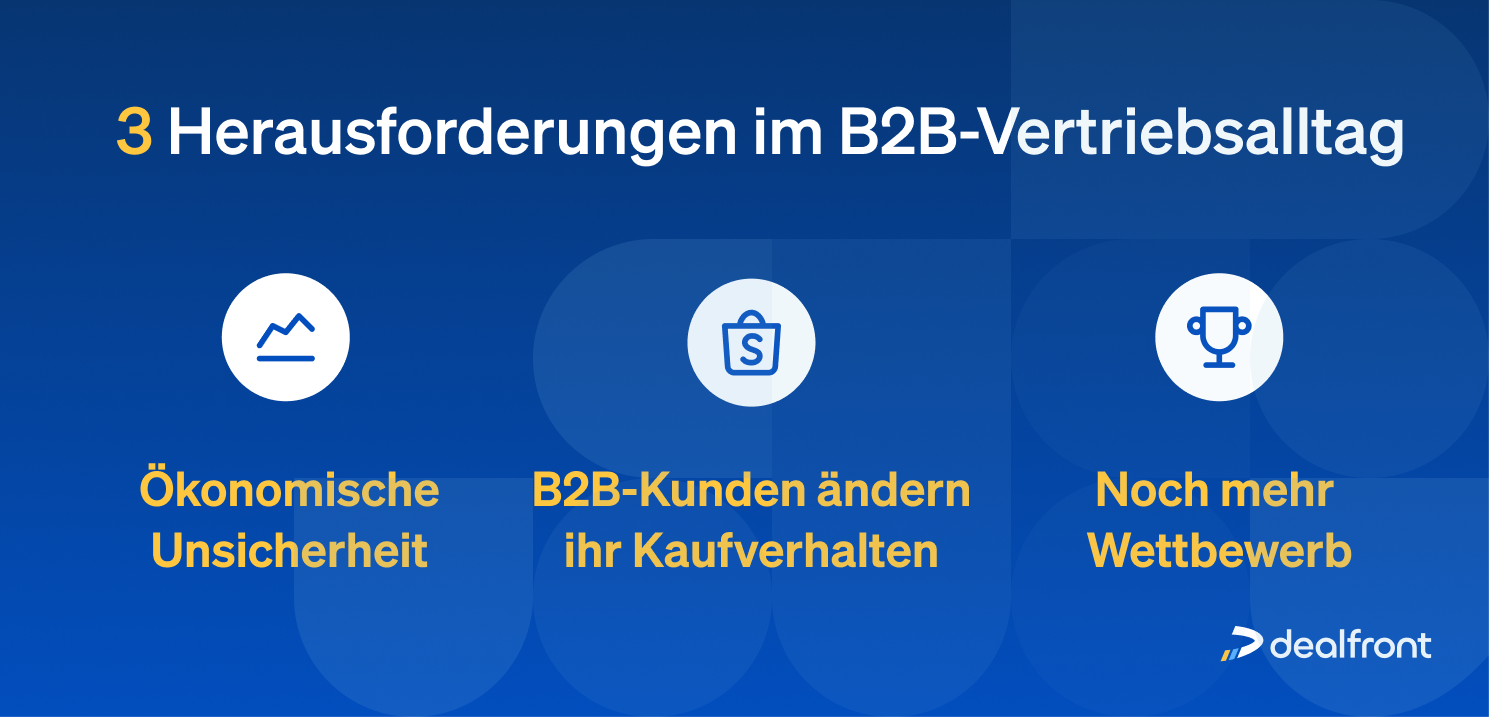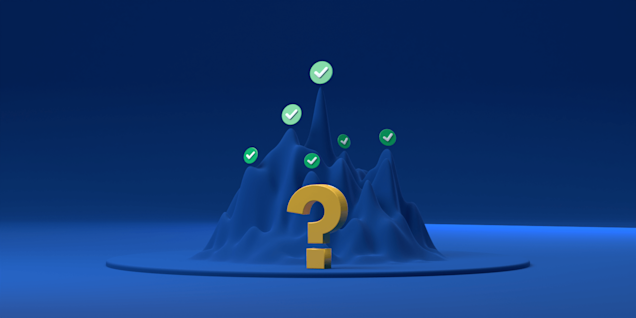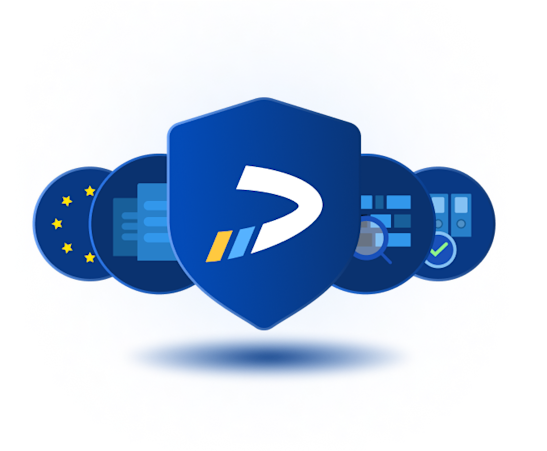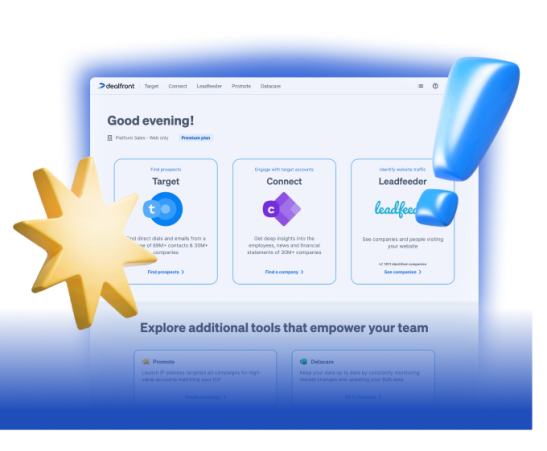In 2023, 61 % of salespeople found selling harder than five years ago. And that’s absolutely not surprising considering everything that’s happened, especially economically, for us this year.
Many B2B industries and their businesses are currently facing budget cuts, rising expenses, layoffs, and increasing competition. As a consequence, buyer behavior is changing, making it harder to close B2B deals.
The good news is that there are ways to counteract any challenging landscape. We’ll help you:
Identify the 'Why?' behind a deal that didn't close
Bridge the gap between sales and marketing
Understand why your USP is what will save you from competitors cutting prices
So, what’s actually going on in B2B right now that’s causing these challenges when selling?
3 factors making it harder closing B2B deals

1. Economic uncertainties
Lately, businesses have been facing noticeable budget restraints, and it doesn't look like it's going to stop any day soon. B2B companies are much more cautious about how they spend their money, and tend to delay and reconsider their purchasing decisions more frequently.
As a result, the decision-making process is now longer and more complex. Sales reps are having a harder time convincing prospects to invest in new products and services, especially the ones that fall in the 'nice to have' rather than ‘must-have’ category.
Economic uncertainties are affecting salespeople everywhere, but there are still things we can do to combat these B2B sales challenges.
Focus more on validation in the decision-making process
Validation is a crucial key to closing B2B deals. When times are good, getting a prospect to see potential in a product or service can be enough to close a deal. How?
You need to heavily validate that your product or service is a good fit for the potential customer. Identify the pain, provide helpful customer use cases, and find the compelling reason (your USP) behind why the prospect needs to buy. Exactly what problem will your prospect solve by buying your solution? You need to be specific and persistent. Turn that ‘nice to have’ into a ‘must-have’!
2. The changing B2B buyer behavior
With economic uncertainties come changing buyer behaviors. The number of people involved in B2B deals keeps increasing as employees are losing their decision-making mandates. Your sales teams will need to convince more stakeholders who, in turn, will conduct more thorough research before finalizing a purchase.
So, in order to close deals, sales representatives must convince and sell to multiple people, adding to the complexity and length of the B2B sales cycle.
How your customers prefer to buy is also changing, and they expect you to tailor your selling approach to accommodate them. Some customers prefer a product-led (PLG) approach, where they get to test out the product and buy on their own terms. Others need a more sales-led (SLG) approach, with a sales rep guiding them towards the purchase. But this also depends on your product. Now, you’ll just have to find that sweet spot between your go-to-market strategy and the customers’ needs.
This requires investing additional effort, time, and resources to accommodate each potential customer's preferred buying style.
Tailor your selling approach (there's no one-size-fits-all)
With that said: the solution lies in adjusting your selling process to fit different customers. The first step is finding out how each prospect prefers to be contacted. Some prefer email, others LinkedIn, or a classic phone call.
Begin by reaching out to each prospect through multiple channels; once you have a sense of which is most effective, then you can narrow it down.
Implementing a multichannel approach is crucial.
If you don't use your customer's preferred channels, 40 % of them will take their business elsewhere.
The next step is to tailor your overall selling approach. You will soon notice which prospects want to explore the product on their own and which ones want more hands-on guidance.
If you're planning on applying a PLG approach, it's crucial that your product can handle it. Not all products are made to sell themselves. To succeed with PLG, you want to have a product that is simple, easily digestible, and has a fixed price.
It's also important to remember that you can't do it all. Create a somewhat flexible selling process that works for you, your target audience, and your product. It's easy to get overwhelmed, so be honest about what you can do and what you can't.
3. Increased competition
Another factor adding to the challenging landscape is the surge in competition, especially in the B2B SaaS space. With new products arriving left and right (and potentially undercutting prices), buyers have an abundance of options to choose from.
That means your B2B customers may have a more meticulous evaluation process, making it harder for you to stand out and close deals. Intense competition often puts pressure on pricing and you may struggle to maintain profitability while offering competitive prices.
On the plus side: competition isn’t all bad. It can also help educate the market and show that there's a need for your product or service, which can benefit you in the long run.
Leverage your unique selling point (USP) like never before
So, how do you beat the competition? It obviously depends on your company and industry, but our tip is to stay true to what you can deliver. In other words, hang on to your unique selling points (USPs).
In the end, everything comes down to how you differentiate yourself from the competition. What can you offer that they can't? Don't say 'lower prices', that's not the right answer here. In most cases, lowering prices to win customers is a race to the bottom.
You are more likely to succeed long-term if you offer a unique solution that addresses a specific pain point for your customers.
Still, there will be times when the customer goes with the lower-priced product. Just know that when that happens, it's because that customer wasn't your ideal customer.
The loss of that one customer will be worth the many others you can potentially win. It's like that old saying: when one door closes, another opens. Sometimes, it's important to be able to say no, so you can say yes later.
In the long run, you won't win customers over with low prices; you win them over by offering the best solution to their problems.
That doesn't mean you have to have a totally unique product, but you do need to have a unique twist on it and offer something that the competitors don't. Maybe it's a set of specific integrations, 24/7 customer support, or a GDPR-compliant platform.
Whatever your USP is, put it to good use!
How to close more B2B deals in tough times
Now that you have a good understanding of the challenges we're facing, here are a few more actionable tips on how you can optimize your selling process to win more deals.
Let's explore how to use automation in moderation, implement smarketing objectives, and identify the 'Why?' behind deals that don't close.
Use automation, but don't forget the human touch
Most companies are using some form of marketing automation tools to streamline processes like lead scoring and lead nurturing.
The problem with marketing automation is when it's overused.
If you've ever gotten an automated chain of robotic emails from a company, you know what I mean. Automation should not be used to replace all human interaction in the sales process, even if it has its place (more on that further down).
Today, most customers can tell if an email has been automated or if there's human touch involved. With competition increasing, the amount of marketing emails flooding your prospect's email inboxes is also growing exponentially.
You can stand out by going that extra mile for your potential customers, finding out who they are and what stage in the buying process they’re at.
Don't just draft 100 emails and hit send. Instead, take a few extra minutes to tailor your emails to that specific prospect. It doesn't need to be advanced or time-consuming, and using templates is perfectly fine. Just make sure that the right message goes out to the right prospect.
You never want to spam the prospect, which will inevitably happen at some point if you just leave your email sequences to 100 % automation.
With that said, you can really benefit from automation when it comes to measuring buyer intent. For example, by using a sales prospecting tool like Dealfront to find out exactly who is visiting what pages on your website.
Did you know that at least 50 % of prospects are not a good fit for your product or service? If you can measure buyer intent, you will have a much easier time identifying your ideal customers. Your prospects will be more okay with you reaching out this way since they clearly have shown interest in buying your product or service.
Stay on the right side of data privacy regulations with your marketing strategy. Always make sure that you have researched the marketing regulations of the country your prospects and customers are in before you market to them.
Have sales and marketing join forces (for real)
When times are tough, we need to put our differences aside and work together.
'Smarketing' is when sales and marketing work closely together towards the same goals, and if you've ever worked at a sales or marketing department, you know that it's easier said than done.
One crucial step towards creating a successful 'smarketing' team is to implement shared objectives for sales and marketing strategies. When the marketing team is only chasing MQLs and the sales team only focuses on how much they close, it's hard to collaborate.
If you want sales and marketing to join forces, marketing needs to be just as responsible for the revenue as the sales team. Different targets are what create friction, tension, and miscommunication between the two teams, and sometimes even making them work towards each other.
For example, if the marketing team is solely evaluating actions based on MQLs, why would they eliminate a channel that consistently produces numerous MQLs, even if it doesn't translate into revenue?
When both teams are responsible for the sales revenue, they can work together to prioritize actions that will actually increase it.
Another tip is helping sales understand how B2B marketing really works, how leads are converted, and how it drives revenue. Then, it's much easier for sales to give marketing constructive feedback and have a solution-oriented mindset, instead of just saying, 'we need better leads'. Getting feedback that is truly actionable will help refine marketing efforts that will ultimately lead to better leads.
At times like these we need all hands on deck, and we want to work together towards the same goals, not against each other, towards different ones.
Get to the bottom behind 'Why?' the deal didn't close
It can be easy to hide behind excuses and blame the lack of closed deals on factors like the current economic uncertainties. However, that's not the only reason deals don't close, and we can eliminate excuses like this by identifying the root cause.
My tip is to construct a 'perfect' sales cycle, going through all the different phases of the B2B sales funnel. Map out the entire customer journey so it's easy to go in and troubleshoot each stage and analyze what went wrong.
Then, add a couple of questions for each stage so your team can double-check for themselves to make sure they are on the right track. For example, did you make sure that the lead is a good fit? Did you try to contact the lead as soon as possible? Did you find out how the lead wants to be contacted going forward?
By doing this, you get a good understanding of the different factors affecting the customer's journey, the ones you can influence and the ones you can't.
Don’t be overwhelmed into inaction: Be prepared
We’re all facing economic uncertainties, increased competition, and evolving buyer behaviors. And with how the world is constantly changing, we’ll always have phases where things get tougher. We shouldn’t be burying our heads in the sand, we just need new strategies.
This is the time to double down on your smarketing efforts, leverage your USP like never before, tailor your sales approach to each customer's needs, and make sure to find out the 'Why?' behind the deals that don't close. By catering to their more specific needs you’ll ultimately be building trust.
When you embrace these challenges, and adapt your B2B sales strategy, you’ll pull ahead of your competition instead of playing catch-up.





